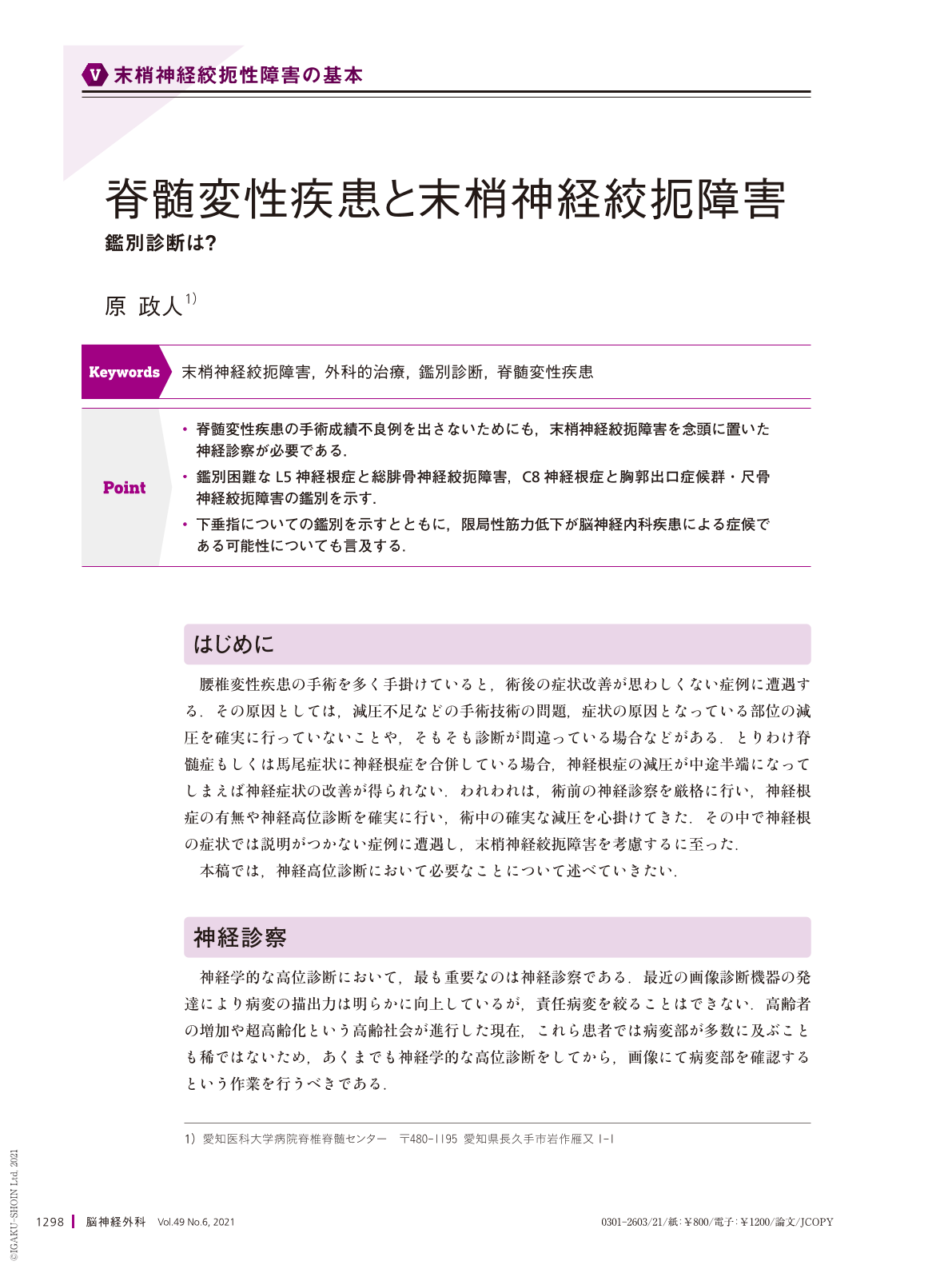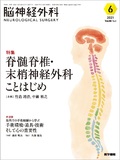Japanese
English
- 有料閲覧
- Abstract 文献概要
- 1ページ目 Look Inside
- 参考文献 Reference
Point
・脊髄変性疾患の手術成績不良例を出さないためにも,末梢神経絞扼障害を念頭に置いた神経診察が必要である.
・鑑別困難なL5神経根症と総腓骨神経絞扼障害,C8神経根症と胸郭出口症候群・尺骨神経絞扼障害の鑑別を示す.
・下垂指についての鑑別を示すとともに,限局性筋力低下が脳神経内科疾患による症候である可能性についても言及する.
In the surgical treatment of spinal degenerative disorders, neural function improves to some extent upon successful neural decompression. However, we have witnessed cases with poor postoperative results. The causes include surgical procedure issues, such as insufficient decompression of neural tissues and overlooking sites to be decompressed, and neurological misdiagnosis of other causative lesions or multiple lesions.
Here, as necessary knowledge for spine surgeons dealing with spinal cord degenerative disorders to prevent poor surgical results, we have discussed the differentiation of peripheral nerve entrapment neuropathy from spinal degenerative disorders. Specifically, we have focused on L5 radiculopathy or common peroneal nerve entrapment disorder and C8 radiculopathy or thoracic outlet syndrome or ulnar nerve entrapment neuropathy, which are difficult to distinguish, and have explained the difference in their neurological symptoms from an anatomical perspective. We have also described the differential diagnosis of drop fingers, which is one of the neurological symptoms, and have mentioned the possibility of diseases managed by neurologists, which neurosurgeons should know about.

Copyright © 2021, Igaku-Shoin Ltd. All rights reserved.


